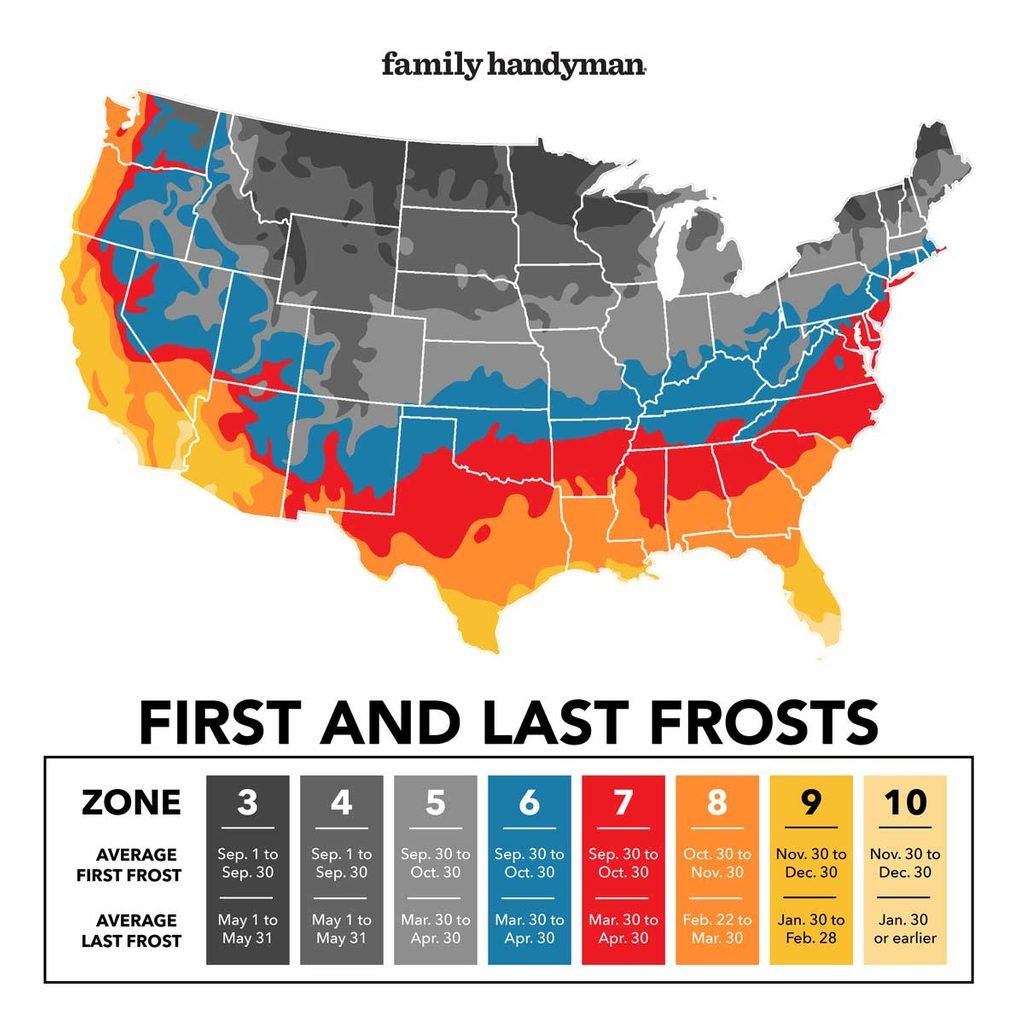What Is the First Frost Date Where You Live?
Updated: Jul. 15, 2023

Frost Dates are the bookends for your vegetable garden and annual flowerbeds. Mark the dates on your calendar, then plan your garden accordingly.
Frost can bring a sudden end to your fall harvest, just like it can kill tender young plants early in the spring. Spring or fall, you have to be ready for the first time the mercury dips below freezing, so it’s important to know when to expect freezing temperatures so you can deal with the weather before it harms your plants.
What Is a Frost?
In short, it means freezing temperatures outside. However, there are three levels of a freeze, which are divided up based on their effect on plants.
- A light freeze ranges from 29 to 32 degrees F, and in those conditions, the most tender plants can be killed.
- A moderate freeze goes from 25 to 28 degrees F. That’s cold enough to damage most plants. Temperatures below 28 degrees F are more commonly known as a killing frost.
- A heavy freeze is anything below 24 degrees F.
Another factor to consider is how long the low temperature will hold overnight. Still, even if it’s only dipping below 32 degrees for a short window of time, you need to prepare your garden, which is why it’s important to know the frost dates where you live.
On This Page
What Is a Frost Date?
The Frost Date is actually shorthand for two dates: First Frost and Last Frost. These are the average dates when frost is first or last expected in a certain area. These are averages, not guarantees. But they can be helpful when determining planting times, and when planning a final harvest and fall cleanup.
When Is the First Frost Date?
The First Frost date usually occurs in fall, or sometimes late summer depending on how far north you live. It can differ from town to town based on geographical factors.
For instance, First Frost for Des Moines, Ia. is Oct. 12. But an hour north, First Frost is more than a week earlier. You can find your Frost Dates at your local cooperative extension website or by searching “frost dates” along with your town and state or zip code. The success of your fall and winter vegetables will depend on this date.
When Is the Last Frost Date?
The Last Frost date comes in spring and determines your planting dates. If you’re raising plants from seed, the seed packet will provide sowing instructions around those dates. Look for something like, “wait to sow seeds outdoors until danger of frost has passed,” which is the Last Frost date. If you sow seeds indoors, the seed packet will specify something like “Sow seeds six weeks before your average Last Frost date.”
What Can Be Planted Before the Last Frost?
Plants such as spinach, lettuce, kale and peas can be planted before the average Last Frost date of the season. In fact, they’ll do better in the cooler weather. Some gardeners start growing season early by providing protection for seedlings in spring, like using empty plastic milk jugs as miniature greenhouses. Summer vegetables and most herbs are planted outdoors after the Last Frost date.
Are There Any Plants That Can Survive a Freeze?
First, it pays to define what an actual freeze is. A frost is when ice crystals form on surfaces, generally between 32 and 36 degrees F. A light freeze is between 29 and 32 F, a hard freeze between 25 and 28 degrees F, and a killing freeze 24 F and below. Some vegetables can withstand a light freeze without protection, among them kale, Swiss chard, leaf lettuce, peas and spinach.
Will One Night of Frost Kill My Plants?
In most cases, the answer is a qualified yes. It’s qualified because a light freeze won’t kill your tender vegetables if you cover them. That’s why some commercial growers use plastic-covered hoop houses to extend the growing season for their vegetables.
In Iowa, for example, growers raising tomatoes in hoop houses can harvest into early December. Home gardeners can cover their sensitive plants with sheets anchored to the ground. Uncover in mid-morning once temperatures are well above freezing again.